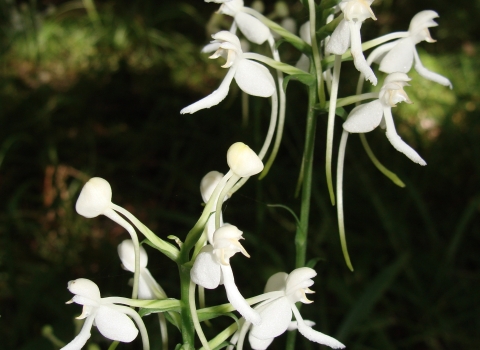LAKEWOOD, Colo. –In the continuing efforts to recover one of America's most endangered amphibians, 900 adult Wyoming toads were released at three sites in the Laramie River basin on June 1st.
The endangered amphibians spent the last year growing into adulthood at the Saratoga National Fish Hatchery in Saratoga, Wyoming. The Wyoming toad only lives in Albany County, Wyoming and was released into three properties along the Little Laramie River. The Buford Foundation, Mortenson Lake National Wildlife Refuge and another private ranch owned by Fred Lindzey. The release marked the first time adults have been reintroduced into the wild and the largest toad release ever.
“This release was the product of a number of partnerships, among the Service, the State and county and private landowners,” said Greg Gerlich, Assistant Regional Director for Fish and Aquatic Conservation with the U.S. Fish and Wildlife Service.
The release is part of the 2015 recovery plan which set the delisting recovery goal as having establishing at least five self-sustaining populations.
One strategy to allow for better toad survival is the practice of “soft releases,” where captive-bred adults and tadpoles are released initially into enclosures to give them a better chance of survival as the toads have time to adapt to their new environments.
Landowner Fred Lindzey, who owns a ranch on the Little Laramie River, has a safe harbor agreement and is an active partner in helping recover the toad.
“I have always been a conservationist and it feels really good to release these toads,” said Lindzey. “If it works out, it’ll feel even better.”
At the Buford Foundation, a private ranch that teaches kids environmental education, the “soft release” adults were placed in boxes made from wire mesh, PVC pipe and wood. They are scheduled to live in the enclosures for several days before joining the others that were “hard released” directly into the wetlands around the lakes and Laramie River.
Toads in the wild and in captivity are susceptible to an infectious disease known as chytridimycosis, or chytrid, which threatens amphibians around the world.
Release crews took every precaution from wearing gloves to disinfecting boots to not spread the disease.
“Chytrid fungus is basically the No. 1 threat to the toads, and we’ve got to keep them safe,” said Lizzy Mack, Wyoming toad manager at the Wyoming Ecological Services Office.
Over the next few months Mack and her team will monitor this new population for chytrid as well as how well the toads adapt to their new homes.
The Wyoming toad was plentiful until the 1970s, when its population took a sudden and swift decline. It was listed under the Endangered Species Act in 1984 and considered extinct shortly thereafter until rediscovery at Mortenson Lake southwest of Laramie in 1987. Some of the last known individuals were taken into captivity in 1989.
Captive breeding of the Wyoming toad has been ongoing since 1995 and now occurs at eight zoos around the country as well as the University of Wyoming’s Red Buttes Biological Laboratory and Saratoga National Fish Hatchery.
The mission of the U.S. Fish and Wildlife Service is working with others to conserve, protect, and enhance fish, wildlife, plants, and their habitats for the continuing benefit of the American people. We are both a leader and trusted partner in fish and wildlife conservation, known for our scientific excellence, stewardship of lands and natural resources, dedicated professionals, and commitment to public service.
Connect with our Facebook page at http://www.facebook.com/USFWSMountainPrairie, follow our tweets at http://twitter.com/USFWSMtnPrairie, watch our YouTube Channel at http://www.youtube.com/usfws and download photos from our Flickr page at http://www.flickr.com/photos/usfwsmtnprairie/.



